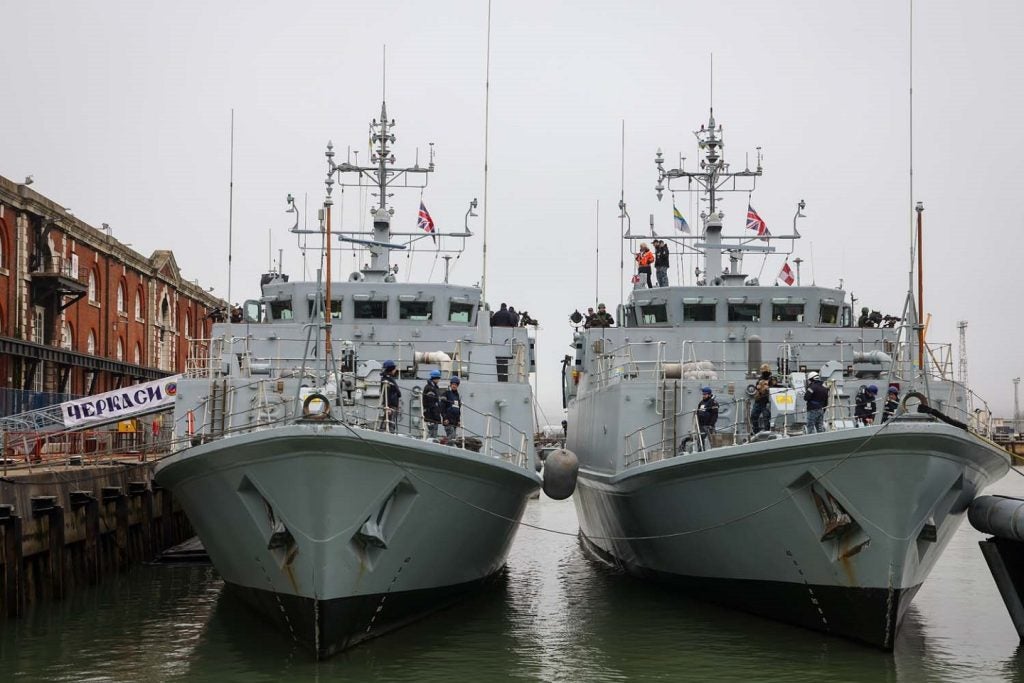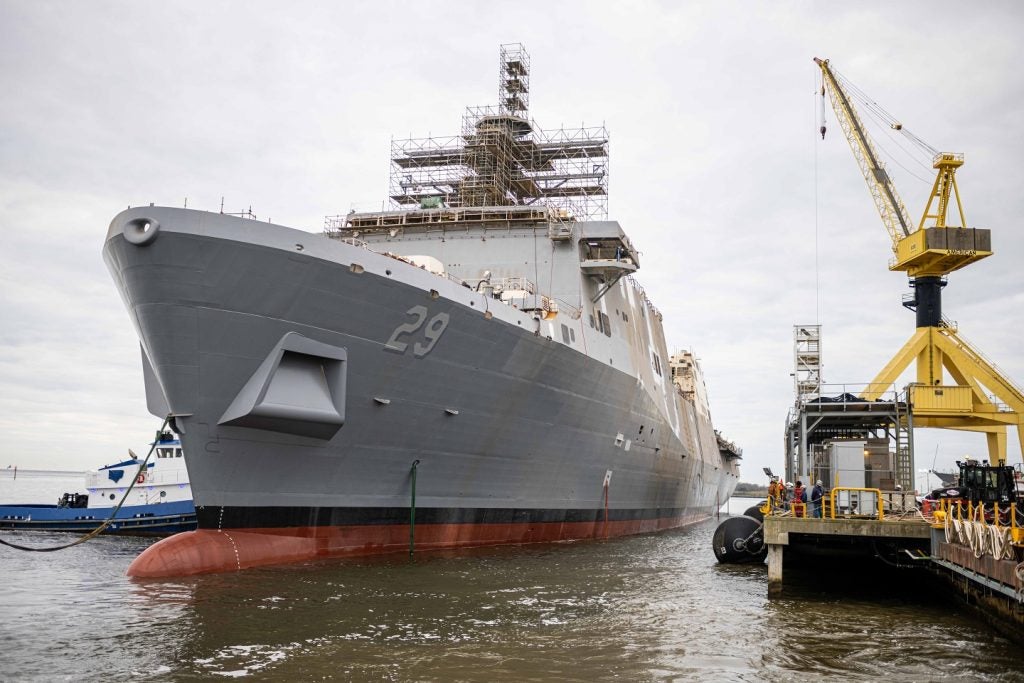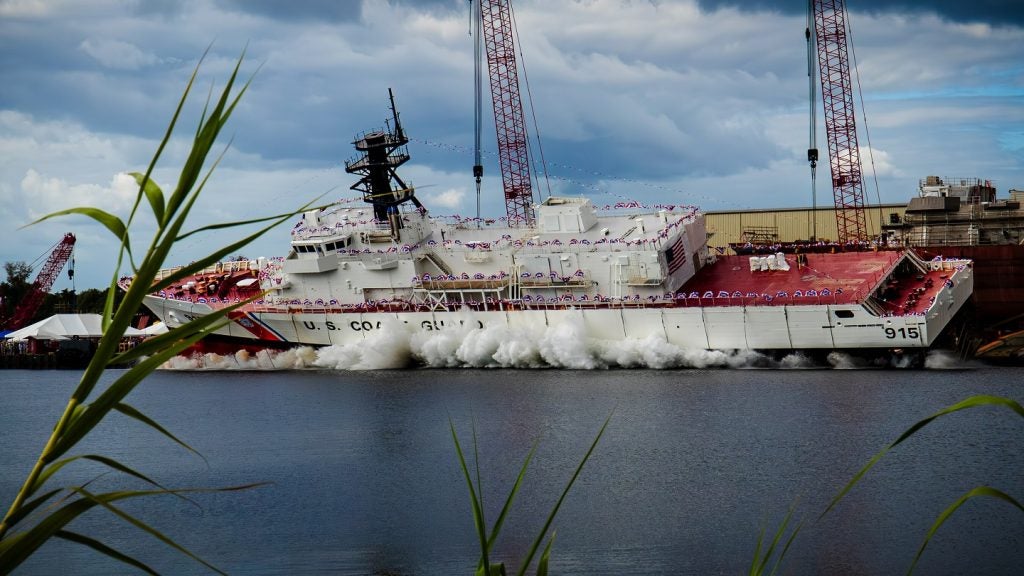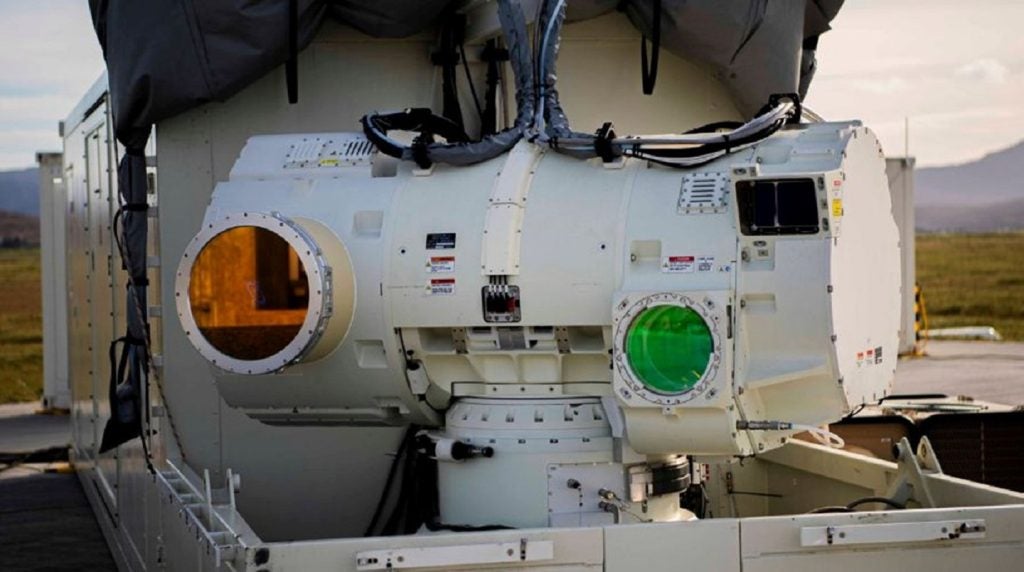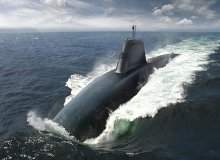

US Navy could install electromagnetic railgun on its new Zumwalt-class destroyer

The US Navy is reportedly considering options to install an electromagnetic railgun on its third Zumwalt-class ship, Lyndon B Johnson (DDG-1002), which is currently being constructed at General Dynamics Bath Iron Works (BIW).
Developed by BAE Systems, the railgun uses an electromagnetic force known as the ‘Lorenz Force’ to launch a projectile at six or seven times the speed of sound.
Launched at high velocities to achieve greater ranges than conventional guns, the guided projectile maintains enough kinetic energy to eliminate the need for a high explosive payload when it reaches its target.
UK MoD invests £201m for Successor submarine design work
The UK Ministry of Defense (MoD) announced an investment of £201m to support the design and development of the Royal Navy’s future nuclear deterrent Successor submarines.
See Also:
The investment is said to be a part of the overall £3.3bn package, which was announced in the last parliament for the assessment phase of the Successor submarine programme.
How well do you really know your competitors?
Access the most comprehensive Company Profiles on the market, powered by GlobalData. Save hours of research. Gain competitive edge.

Thank you!
Your download email will arrive shortly
Not ready to buy yet? Download a free sample
We are confident about the unique quality of our Company Profiles. However, we want you to make the most beneficial decision for your business, so we offer a free sample that you can download by submitting the below form
By GlobalDataBAE systems will use the funding to develop the design of the submarine including designing the layout of the new vessel’s equipment and systems, plan the manufacturing process, and produce early prototypes.
HMS Queen Elizabeth crew receives first logistics compartment
The crew of the UK Royal Navy’s first Queen Elizabeth Class (QEC) aircraft carrier, HMS Queen Elizabeth, took delivery of its first logistics compartment.
The unit is one of 3010 compartments that will be installed on the aircraft carrier.
Designated as 9J, the logistics compartment is situated around eight decks down from the flight deck of the vessel; roughly mid-ship.
The compartments will be labelled in alphabetical order extending from the bow to the stern of the vessel.
Indian Navy conducts International Fleet Review 2016
The Indian Navy conducted the International Fleet Review (IFR) 2016 in the Bay of Bengal, off the Visakhapatnam coast, Andhra Pradesh, India.
Themed as United through Oceans, and attended by nearly 50 nations, the four-day event witnessed a global participation from 90 ships, including 24 warships and 24 foreign naval chiefs.
The naval exercise aims at fostering international ties to pledge assistance to combat any potential maritime security or humanitarian threats at sea. It is expected to promote cooperation, integrity and interoperability on a global level.
Australian Navy’s HMAS Ballarat completes Anti-Ship Missile Defence Upgrade

The Royal Australian Navy’s (RAN) sixth Anzac-class frigate HMAS Ballarat (FFH 155) completed an anti-ship missile defence upgrade in Cockburn Sound, Western Australia.
The upgrade programme was managed by Anzac Systems Program Office in collaboration with industry partners, including BAE Systems, NSM, Saab, and multiple sub-contractors.
The upgrades included an overhauled combat system and incorporation of the Australian-designed CEA phased array radar suite as well as a holistic package of engineering changes and maintenance tasks.
Rheinmetall and Bundewehr test high-energy laser effector aboard German warship

Rheinmetall and the German Bundewehr jointly conducted testing of a high-energy laser effector (HEL) mounted on a German warship.
The testing of the 10kW HEL effector atop the MLG27 light naval gun was conducted to demonstrate the technology’s effectiveness in maritime operations.
During testing, the technology was engaged to track potential targets, which ranged from small to highly manoeuvrable targets, including unmanned aerial vehicles (UAVs) and very small surface craft, as well as stationary targets on land.
US Navy conducts four flight tests of SM-6 Block I missile
The US Navy successfully conducted four flight tests of the surface-to-air Standard Missile-6 Block I (SM-6 Blk I) off the Hawaiian coast.
The tests, termed as Alpha, Bravo, Delta, and Golf consecutively, constitute a part of SM-6 Blk I follow-on operational test and evaluation (FOT&E) and were aimed to evaluate the performance of the missiles.
Integrated Warfare Systems (PEO IWS) major programme manager for surface ship weapons programme executive officer Captain Michael Ladner said: "These flight tests, once again, demonstrate the versatility and capability that the SM-6 provides for our Navy’s fleet defence.
"These tests mark the longest downrange and cross-range engagements of the SM-6 to date."
UK Navy’s Type 45 destroyers to undergo engine refit following repeated power outages

The UK Ministry of Defence (MoD) reportedly confirmed that the Royal Navy’s fleet of six Type 45 destroyers will undergo a major engine refitting programme after a series of reported blackouts.
The new warships, worth £1bn have been plagued with power outages since 2009, when HMS Daring had a blackout in the Atlantic on its maiden trip and developed an engine propulsion problem while being commissioned off the coast of Kuwait.
In 2014, HMS Dauntless reportedly had to leave a training drill owing to power outage.
Thales selected to upgrade communications system on UK Navy’s Type 23 frigates

Thales been selected by the UK Ministry of Defence (MoD) to conduct a mid-life update to the external communications voice distribution and management system (called KMY) for the Royal Navy’s Type 23 Duke-class frigate fleet.
Under the contract valued at $19m, Thales will replace the existing analogue KMY communications system with a fully digital solution, the KMY replacement system (KRS).
Thales Radio Communications Products vice-president Hervé Derrey said: "The Thales Team has successfully developed an innovative and competitive solution, including unique approaches to integrating the system into the legacy platforms with minimal impact, always a key requirement of the customer."
BAE Systems set to support construction of Royal Thai Navy’s 90m offshore patrol vessel
BAE Systems were been awarded a contract by the Royal Thai Navy to render their support to the licensed construction of a second 90m river-class Offshore Patrol Vessel (OPV).
The enterprise, according to the agreement, will lend their engineering support and advice during the construction of the vessel in Bangkok Dock, Thailand.
BAE Systems’ Naval Ships business commercial director Nigel Stewart said: "We’re looking forward to building and strengthening our relationship with Thailand’s shipbuilding industry.



